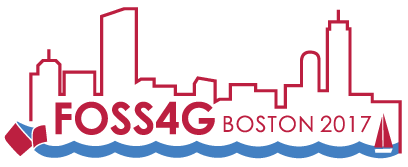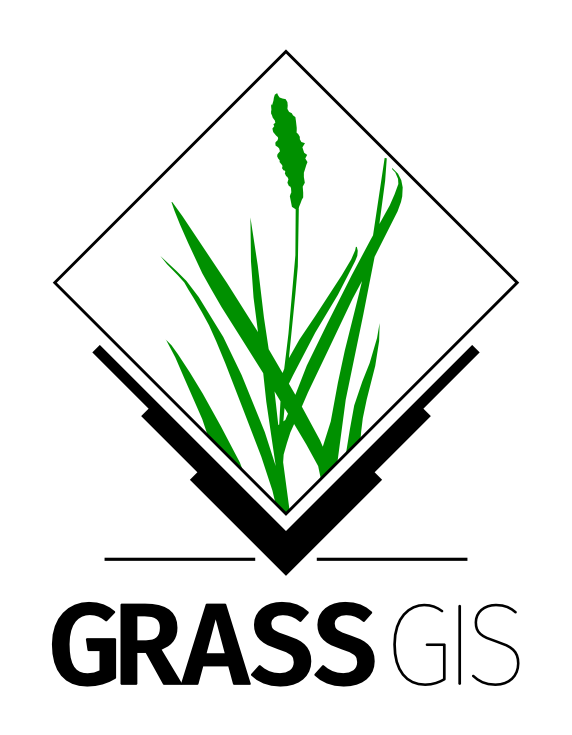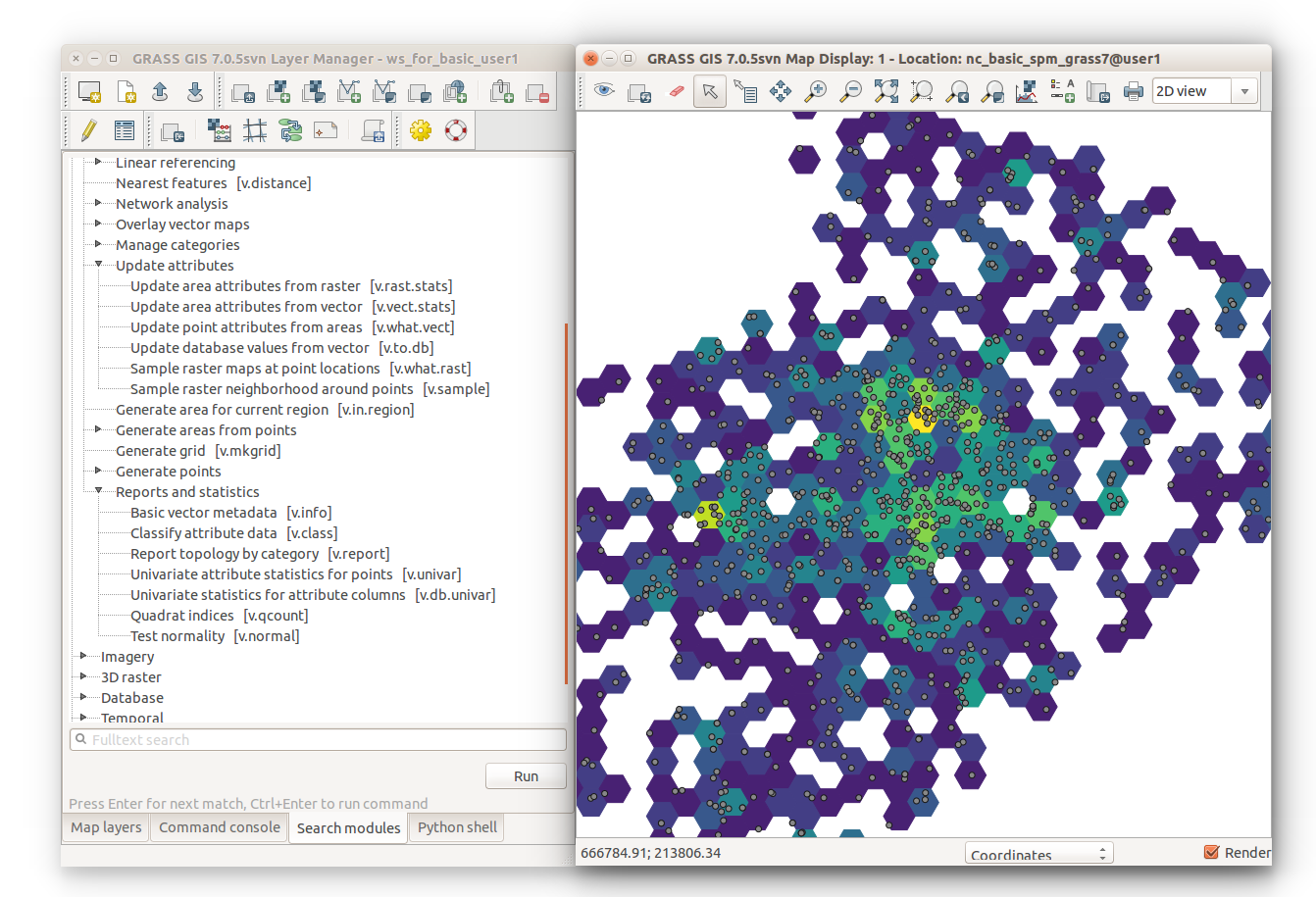GRASS GIS at FOSS4G Boston 2017: Difference between revisions
Jump to navigation
Jump to search
⚠️Wenzeslaus (talk | contribs) (workshop descriptions) |
⚠️Wenzeslaus (talk | contribs) (add images) |
||
| Line 1: | Line 1: | ||
[[File:Foss4g boston 2017 logo.png|center|none]] | [[File:Foss4g boston 2017 logo.png|center|none]] | ||
[[File:Grassgis logo colorlogo text whitebg.png|300px|right|none]] | |||
International Conference for Free and Open Source Software for Geospatial, August 14-19, 2017, Boston, Massachusetts, USA, http://2017.foss4g.org | International Conference for Free and Open Source Software for Geospatial, August 14-19, 2017, Boston, Massachusetts, USA, http://2017.foss4g.org | ||
''Conference schedule in progress. You can vote for presentations at http://community-review.foss4g.org.'' | ''Conference schedule in progress. You can vote for presentations at http://community-review.foss4g.org.'' | ||
[[File:V vect stats hexagons with module tree.png|300px|thumb|right|''From GRASS GIS novice to power user:'' GRASS GIS graphical user interface showing point statistics ({{cmd|v.vect.stats}}) on a hexagonal grid ({{cmd|v.mkgrid}})]] | |||
[[File:Range on ground from north.png|300px|thumb|right|''Processing lidar and UAV point clouds in GRASS GIS:'' Range of z coordinates displayed on terrain surface]] | |||
== Workshops == | == Workshops == | ||
Revision as of 18:51, 31 March 2017


International Conference for Free and Open Source Software for Geospatial, August 14-19, 2017, Boston, Massachusetts, USA, http://2017.foss4g.org
Conference schedule in progress. You can vote for presentations at http://community-review.foss4g.org.


Workshops
Conference program link: http://2017.foss4g.org/workshops
From GRASS GIS novice to power user
by Anna Petrasova from North Carolina State University (NCSU), Giuseppe Amatulli from Yale University, and Vaclav Petras from NCSU
- Description: Do you want to use GRASS GIS, but never understood what that location and mapset are? Do you struggle with the computational region? Or perhaps you used GRASS GIS already but you wonder what g.region -a does? Maybe you were never comfortable with GRASS command line? In this workshop, we will explain and practice all these functions and answer questions more advanced users may have. We will help you decide when to use graphical user interface and when to use the power of command line. We will go through simple examples of vector, raster, and image processing functionality and we will try couple of new and old tools such as vector network analysis or image segmentation which might be the reason you want to use GRASS GIS. We aim this workshop at absolute beginners without prior knowledge of GRASS GIS, but we hope it can be useful also to current users looking for deeper understanding of basic concepts or the curious ones who want to try the latest additions to GRASS GIS.
- Outline: Introduction to the GRASS folder structure and environment, Introduction to graphical user interface and command line, GRASS working environment and working directory, Create location and mapset (from GUI and from command line), Setting the study area extent and pixel size to make the computation correct and efficient, Move data to and from GRASS database, Move data between locations and mapsets, Perform basic raster and vector operations, Try out some of the more advanced and latest features
- Format and requirements: Participants should bring their laptops with GRASS GIS 7. Beginners are encouraged to try using the latest OSGeo-Live virtual machine. There are no special requirements. Just have your laptop with GRASS GIS or OSGeo-Live virtual machine with you.
Processing lidar and UAV point clouds in GRASS GIS
by Vaclav Petras, Anna Petrasova, and Helena Mitasova from North Carolina State University (NCSU)
- Description: GRASS GIS offers, besides other things, numerous analytical tools for point clouds, terrain, and remote sensing. In this hands-on workshop we will explore the tools in GRASS GIS for processing point clouds obtained by lidar or through processing of UAV imagery. We will start with a brief and focused introduction into GRASS GIS graphical user interface (GUI) and we will continue with short introduction to GRASS GIS Python interface. Participants will then decide if they will use GUI, command line, Python, or online Jupyter Notebook for the rest of the workshop. We will explore the properties of the point cloud, interpolate surfaces, and perform advanced terrain analyses to detect landforms and artifacts. We will go through several terrain 2D and 3D visualization techniques to get more information out of the data and finish with vegetation analysis.
- Outline: Basic introduction to graphical user interface, Basic introduction to Python interface, Decide if to use GUI, command line, Python, or online Jupyter Notebook, Binning of the point cloud, Interpolation, Terrain analysis, Visualization, profiles and statistics, Vegetation analysis, 3D visualization
- Format and requirements: This workshop is accessible to beginners, but some basic knowledge of lidar processing or GIS will be helpful for smooth experience. Have your laptop with GRASS GIS or OSGeo-Live virtual machine with you. Online Jupyer Notebooks will be available too.
Presentations
Vote for presentations at http://community-review.foss4g.org